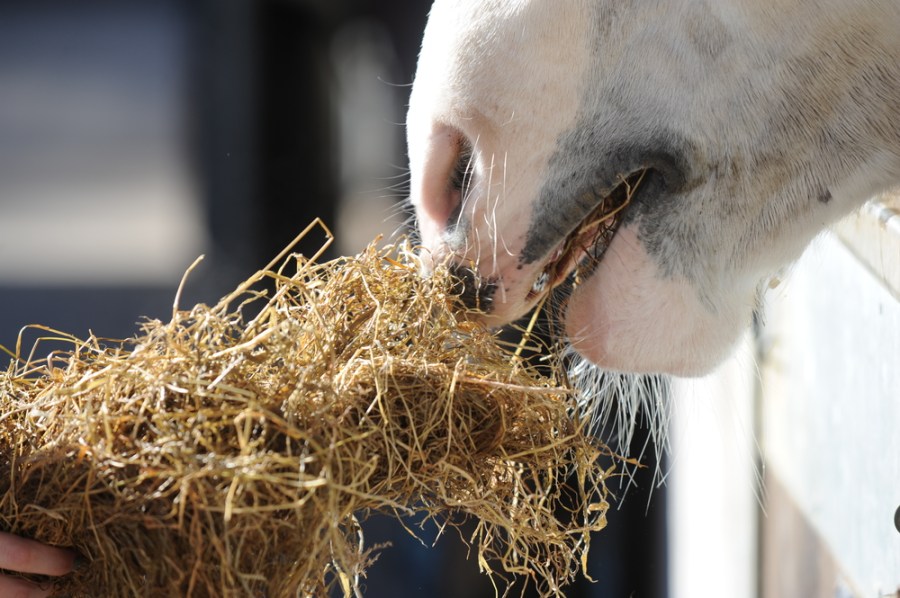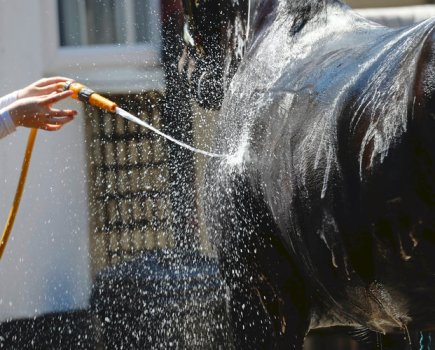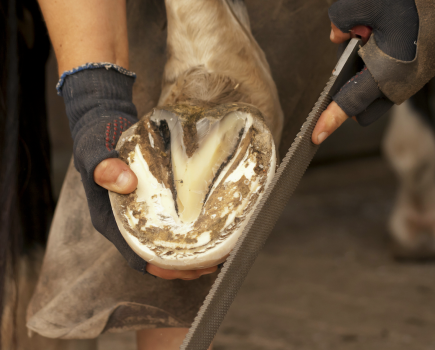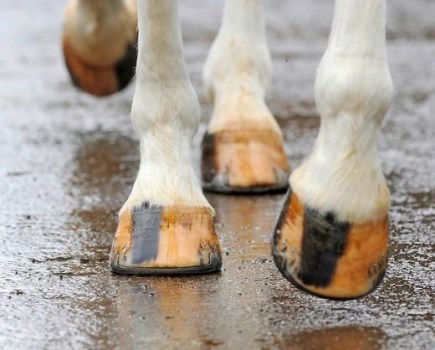Forage is a vital part of your horse’s diet, but the big problem with the quality of horse hay is that it can appear to the layman’s eye to be a good, healthy bale – but under analysis prove deficient in certain nutrients. Hay quality varies every year from area to area and field to field.
According to equine nutritionist Dr Annette Longland, taking the following action will help to determine whether the forage you are feeding to is good quality:
1 Harvest time
Make sure your hay has been harvested at the right stage for the needs of your horse.
As a rough guide, there needs to be a high leaf to stem ratio for horses requiring higher energy and protein hays. A higher stem to leaf ratio suits those equines with lower nutritional requirements, for example laminitics and horses in light work.
2 Assess the colour
Horse hay should be greenish in colour if it is good quality. It should not be brown and certainly never dark brown.
3 Feel it
Hay should feel dry to the touch. Feeling increased warmth when put your hand inside a stack of bales may indicate it was baled too wet.
If this heating is extreme, the hay may catch fire. However, it shouldn’t be over-dry (which is rare in the UK) so that much of the leaf has shattered, crumbled and been lost.
4 Store it wisely
Hay needs to be stored correctly, i.e. in an airy barn with good ventilation. If possible, leave all doors open and leave ‘airways’ between stacks of bales so that any new hay continues to lose water to the atmosphere. Without this ventilation, moisture becomes condensation on other bales and mould will start to grow.
5 Smell it
A good sniff of your horse’s hay is a good way to check its quality. Hay should have a nice smell and not smell ‘musty’.
6 Is it clean?
Good quality horse hay should be visibly clean and free from dust and mould.
7 Check for weeds
Hay should be free of poisonous weeds, for example ragwort, and also free of mud/rodent/insect and general contamination with rubbish. You would be amazed at what some people have found in baled hay. I have heard of a crushed plastic baby’s bottle and batteries being found in a hay bale.
8 How does it feel?
Hay should have the right ‘feel’. Not too stalky or musty. Softer meadow hays may be better for horses with poor teeth.
Analysing hay quality
The only sure-fire way to check the quality of your horse’s hay is to have it analysed in a laboratory. A number of the larger feed companies offer this service for around £15 and a simple Google search will find their contact details.
Until you have had hay analysed, it’s hard to make a judgement call as to whether you need to balance any deficiencies in your horse’s diet, which is a risk if one of their main sources of forage, hay, is lacking.
Feeding high levels of supplementary protein to animals fed high-protein hay is a terrible waste and will only end up on the muck heap. Only if the hay is analysed can the diet be properly balanced with concentrate feeds and feed balancers.
If your horse is overweight or prone to laminitis, their hay analysis should include a water-soluble carbohydrate (or WSC) value, or a non-structural carbohydrate (NSC) value. It’s recommended that laminitics eat forages containing less than 10% WSC or 12% NSC.
Bear in mind that the quality of horse hay can vary from bale to bale — analysis of a single bale is only definitive for that bale. You can lower the chances of quality varying too much by purchasing all your hay from the same supplier, and asking for bales cut from the same field.
How hay is made
Hay has been made in the UK for around 6,000 years. Even so, variable weather is just one influencing factor that means its quality varies from year to year and from field to field.
Successful hay making relies on the forage being dried so that it contains no more than 20% moisture before being baled or stored. For this to happen, farmers will cut their hay field and leave the cut grass on the field to dry out, before baling it as hay.
Therefore, good hay production depends on good weather — a rare commodity for some areas of the UK and other areas of the world.
Types of hay
Hay in the UK is predominantly grass hay and one of two types: meadow or seed.
- Meadow hay consists of many species of grass, legumes (such as clover and alfalfa), herbs and flowers from older, established pastures.
- Seed hay consists of either a single species or a limited number of species that have been specifically sown for hay production, often from rotationally cropped pastures less than five years old.
In the UK, the most nutritious hay is normally cut in June, just before flowering. This is because grasses and legumes form the basis of UK hays, and when these plants start to grow in spring they produce mostly leaves, with little stem, and these leaves contain high levels of highly digestible protein and carbohydrates.
As the plant matures it goes from this young leafy growth in spring, to an increasingly tall plant prior to flowering with a good protein and digestible energy content. It then becomes a very stemmy plant that has flowered, produced and dispersed seed in late summer.
With increasing amounts of stem, the protein content declines and its fibre content increases. So the more leaf you have in your hay, the more digestible it is, and the more stem you have the less digestible it is.
How many calories are in hay?
On average, UK-grown hay should provide enough energy/calories to meet minimum requirements for a horse in light work. Baileys Horse Feeds has been collecting forage analysis results for over 15 years and found that, on average, hay has a Digestible Energy (DE) (or ‘calorie’) content of around nine megajoules per kilogram (MJ/kg).
This means a 500kg horse fed 10kg of hay per day (on a dry matter basis) would therefore, on average, be getting 90 MJ per day. It’s been calculated that a mature 500kg horse in light work needs a minimum daily energy intake of 83.7 MJ to maintain their bodyweight, so 10kg of average hay would easily provide this — and some!
Some horses may require more than this, with factors such as age, health status, temperament, voluntary movement and ambient temperature all playing a role.
However, for good doers who naturally maintain their weight very well, these figures highlight why forage alone, with little or no hard feed, can still result in excess weight gain, as a purely hay diet is already likely to be exceeding basic minimum daily energy/calorie requirements for horses at rest or in light levels of work.
If you are feeding a good-doer, it is important not to restrict forage intake excessively, as doing so can result in digestive health problems. Consider soaking the hay and/or choosing a later cut, stalkier hay which is likely to have a lower energy/calorie content.
Horses eating a forage-only diet may well need a balancer added in order to ensure they are receiving all the nutrients they require for good health.









